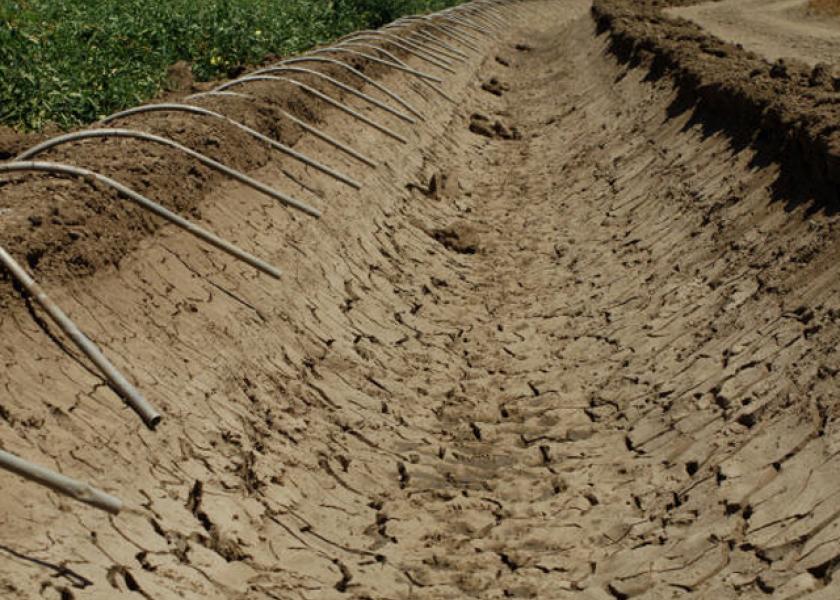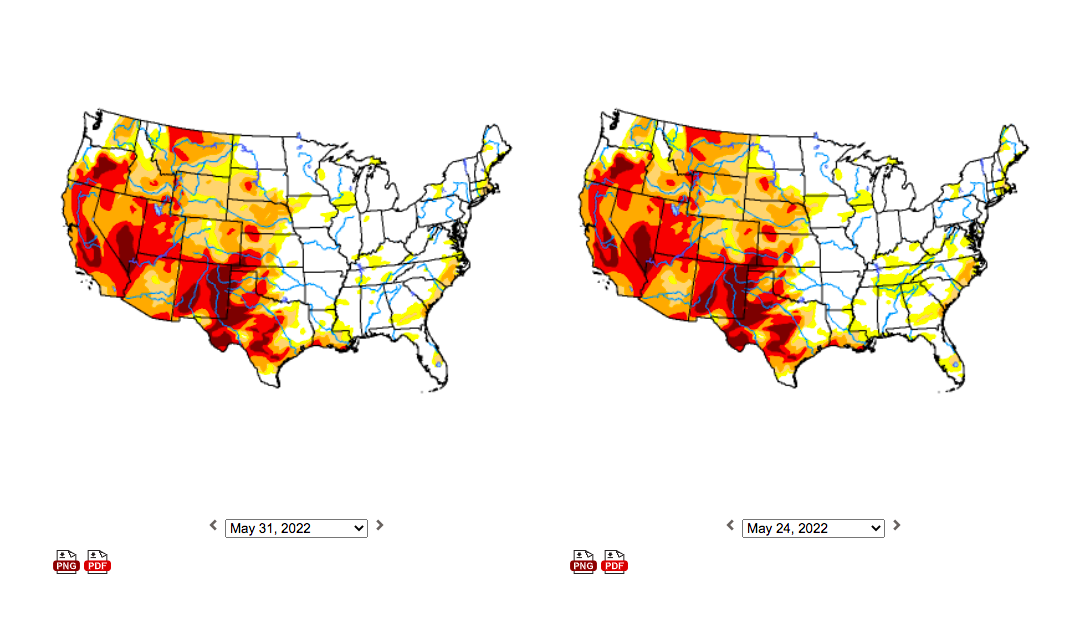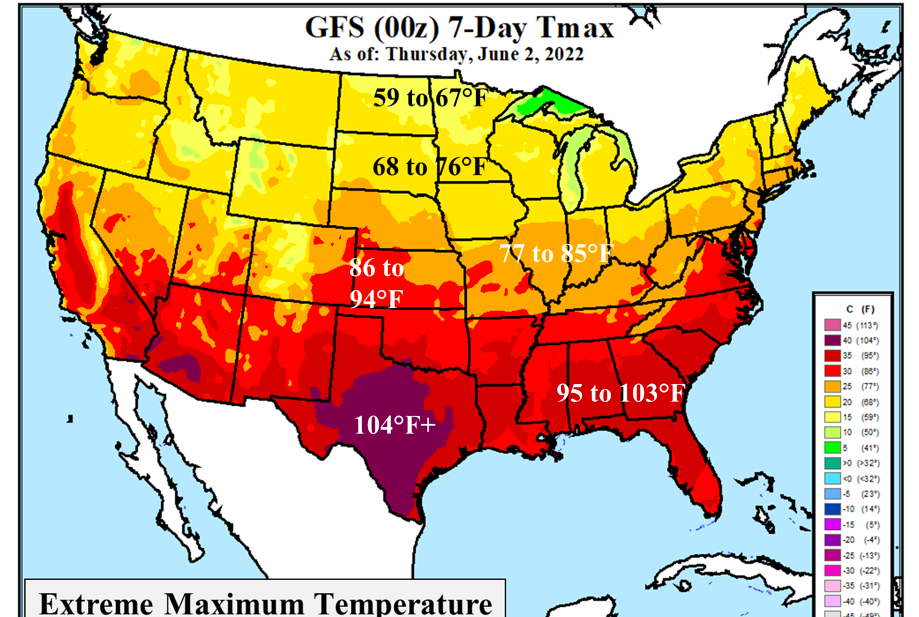The U.S. Just Broke a 27-Week Drought Streak, But Forecasts Don't Look Promising

Less than 50% of the continental U.S. is in moderate- or D1- drought conditions for the first time since November. The latest U.S. Drought Monitor showed a slight improvement in drought conditions across the U.S., but forecasts show drought could grow over the summer months.
USDA Meteorologist Brad Rippey says the 27-week streak in drought conditions means the all-time record of 42 weeks during 2012/2013 still stands. However, the drought picture isn’t pretty in the West, with another streak still on the record books.
“We have edged below 50%. The national number at this point coming in at just under that 50% mark, but we still have another streak going and that is more than 40% of the country and drought. That streak has now reached 88 consecutive weeks going all the way back to late September of 2020. And that is far and away in all-time record previous record was also set during the drought of 2012 and 2013 of 68 consecutive weeks.”

Recent rains have blanked the parts of the Plains, partially easing some drought concerns, but Rippey says the rains in the Southern Plains may not last.
“I wish I had better news on the outlook for the south-central and southwestern United States,” says Rippey. “But unfortunately, indications are that we could regrade or reverse back into a hotter, drier pattern as we move into the mid- to late summer. We have certainly seen some encouraging signs across the Southern Plains in May and even into early June. The longer-term outlooks indicate that heat and drought will continue to be a problem in the mid- to late summer.”

Rippey says that means some of the recent improvements in the drought monitor may have been lost due to triple-digit heat, as well as strong winds. The forecast shows more heat and wind for those areas in the near-term.
“I was looking at some forecasts for the next seven days and triple-digit heat will plague much of Texas, with purple-shaded areas expecting high temperatures of 104 degrees F or greater,” says Rippey, in talking about the latest GFS weather model.
Rippey points out the latest Crop Progress report shows a stark drought picture still sitting in Texas with:
- 70% of Texas ranch land and pastures rated very poor to poor;
- more than 40% of the cotton and grain sorghum rated very poor to poor;
- and 29% of the corn and cotton rated very poor to poor.
“With the rains beginning to fall in some of those areas, there is hope we can turn things around. The plants are young. There is a chance to reverse some of the earlier problems there. But it's going to take more rainfall. If it cuts off again, we're not going to see things come back,” says Rippey.
“Another thing to point out is that we continue to deal with these periods of excessive heat very early in the season across the south-central United States. Even though we've seen rain and continue to see rain in Texas, the heat is going to come roaring back this weekend back into the triple digits," he adds. "And that unfortunately offset some of the positive effects of the rain that has been falling in West Texas.”
Rippey says he’s not ready to say there will be a return of the 2011 growing season, where consecutive days of triple-digit heat, along with severe drought, robbed farmers of their crops. However, he is concerned about the early heat and what it could mean for overall crop yields this year in the area.








